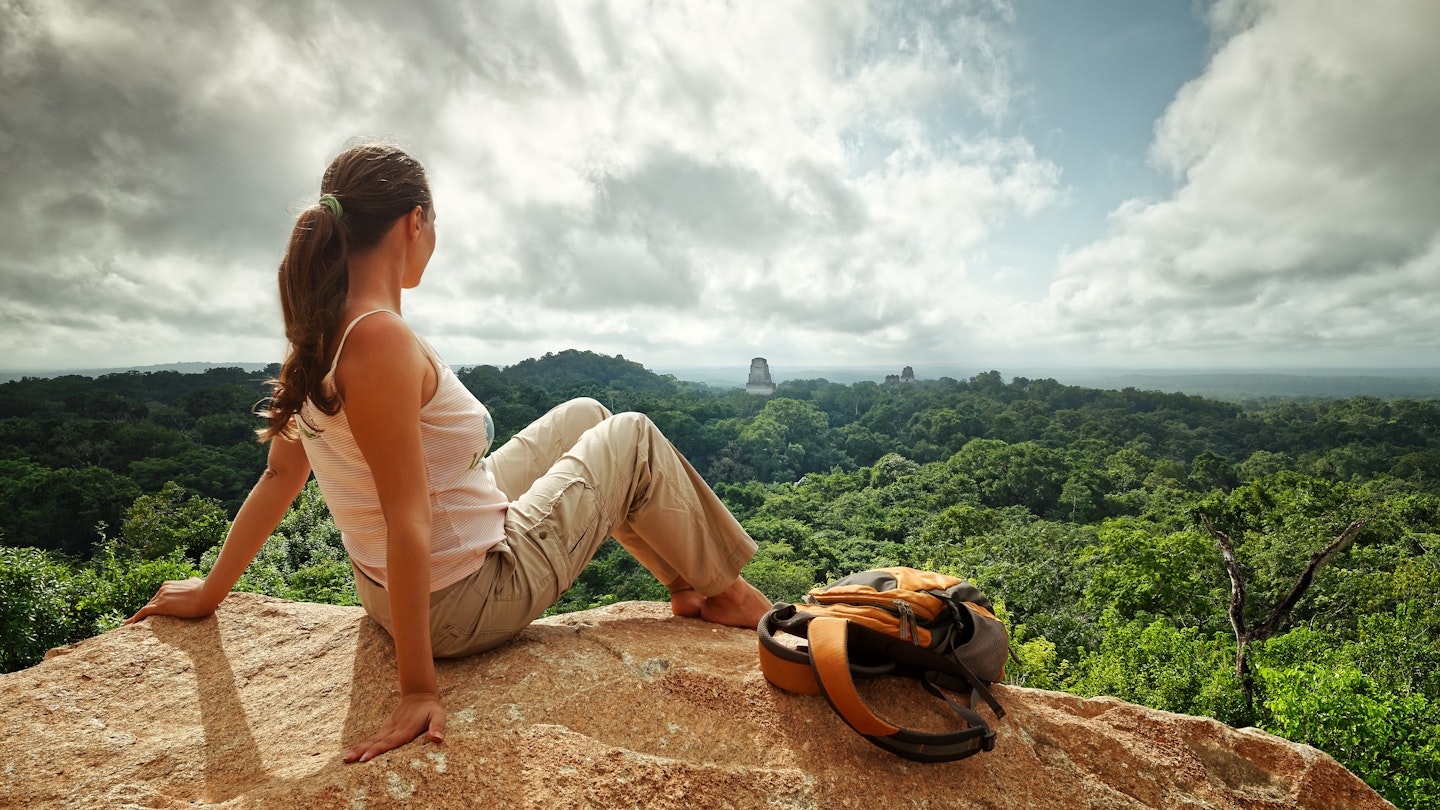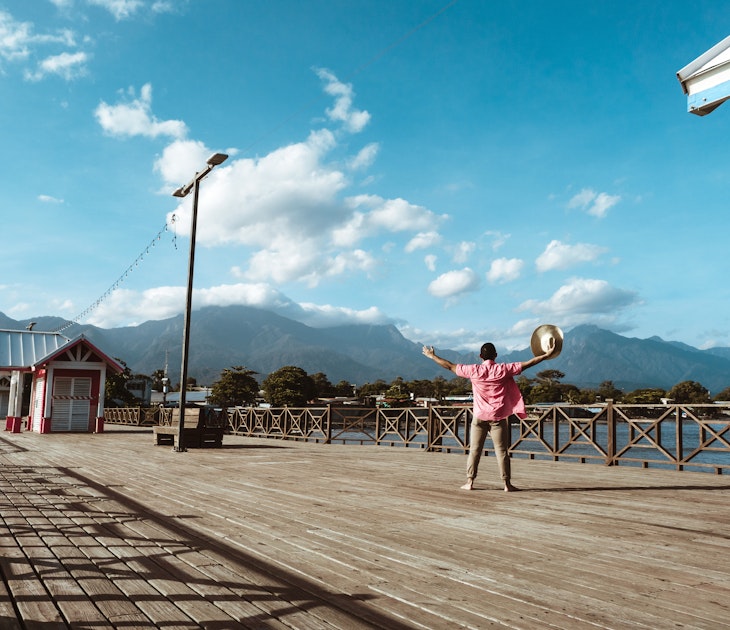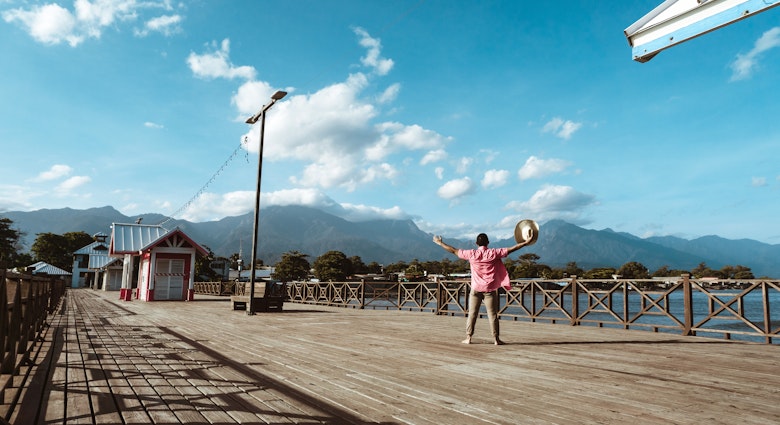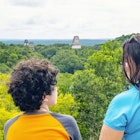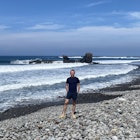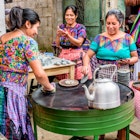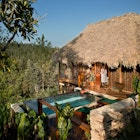Guatemala may be called the Land of Eternal Spring, but that doesn’t mean the weather is spring-like all year round.
While temperatures generally vary according to altitude rather than by time of year, the country has two distinct seasons that can have a big effect on the experience of traveling in this colorful corner of Central America.
The year can be roughly divided into the rainy season and dry season, but these could also be described as the "muddy" and "dusty" seasons. The weather dictates the high season for tourism, and the rains can have a big effect on how you enjoy different sights and activities.
This doesn’t necessarily mean there’s a bad time to visit, but you might have to adapt your expectations, particularly if you want to enjoy the beach or go trekking in the rainforest.
Here's our guide to the best times to visit Guatemala.
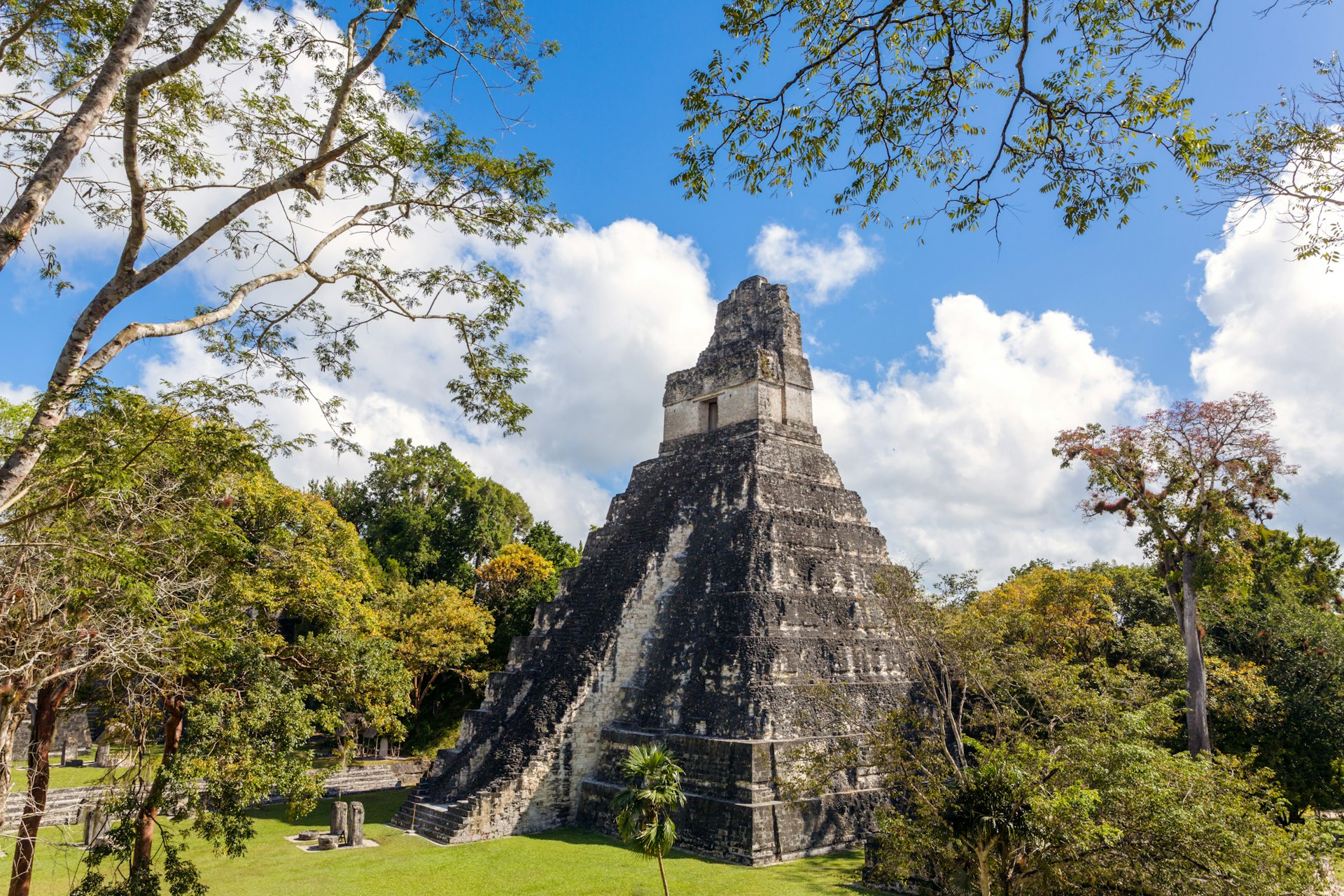
November to March is the best time for festivals and dry weather
Guatemala doesn’t have a traditional high season, shoulder season and low season. Instead, there are two high seasons separated by two low seasons.
The first high season coincides with Guatemala’s dry season, so sunny days are pretty much guaranteed. The dry weather kicks off at the beginning of November, when the hurricane season draws to a close, just in time for the Day of the Dead celebrations.
This peak period typically ends just after Holy Week (Semana Santa) in the run-up to Easter – another of Guatemala's biggest festivals – normally in late March or the first half of April.
This is the most important religious holiday for Guatemalans, and it's also when they have their main annual vacation. During Holy Week, everyone flocks to the coast and Lake Atitlán, which means big crowds and higher prices in these destinations.
The historic former capital, Antigua, also gets busy for Holy Week, when crowds gather to watch its famously colorful religious processions – budget for higher prices and book your accommodations in advance. If you want to avoid the crowds, Guatemala City is less frenetic than usual during this time.
Many tourist stops get busy as Guatemalan city-dwellers take time off for Christmas and New Year, and the lively festivals the season brings. The Burning of the Devil takes place all over Guatemala on December 7th at 6pm – locals gather to throw objects on a bonfire in a ritual designed to cast out bad spirits and the devil himself before ushering in the Christmas period.
The town of Chichicastenango springs to life during the Festival of St Thomas at the end of December. This celebration of their patron saint attracts visitors from all over the region, and the streets are full of music, dancing and singing.
If you visit between November and March, keep in mind that nighttime temperatures can drop quite drastically in the highlands, falling to near freezing in Quetzaltenango. You won’t need a heavy winter coat unless you’re planning on camping, but a warm jacket and socks are essential.
Along with dusty and windy conditions, there may be lots of smoke in the air, as this is the season when farmers burn off the old vegetation in their fields in preparation for the next planting season. If you’re prone to allergies or respiratory ailments, pack your medication and consider wearing a face mask.
February sees the coffee harvest swing into top gear and is the perfect time to go on a coffee tour in one of the country’s eight bean-growing regions, including around Antigua, Lake Atitlán and Cobán.
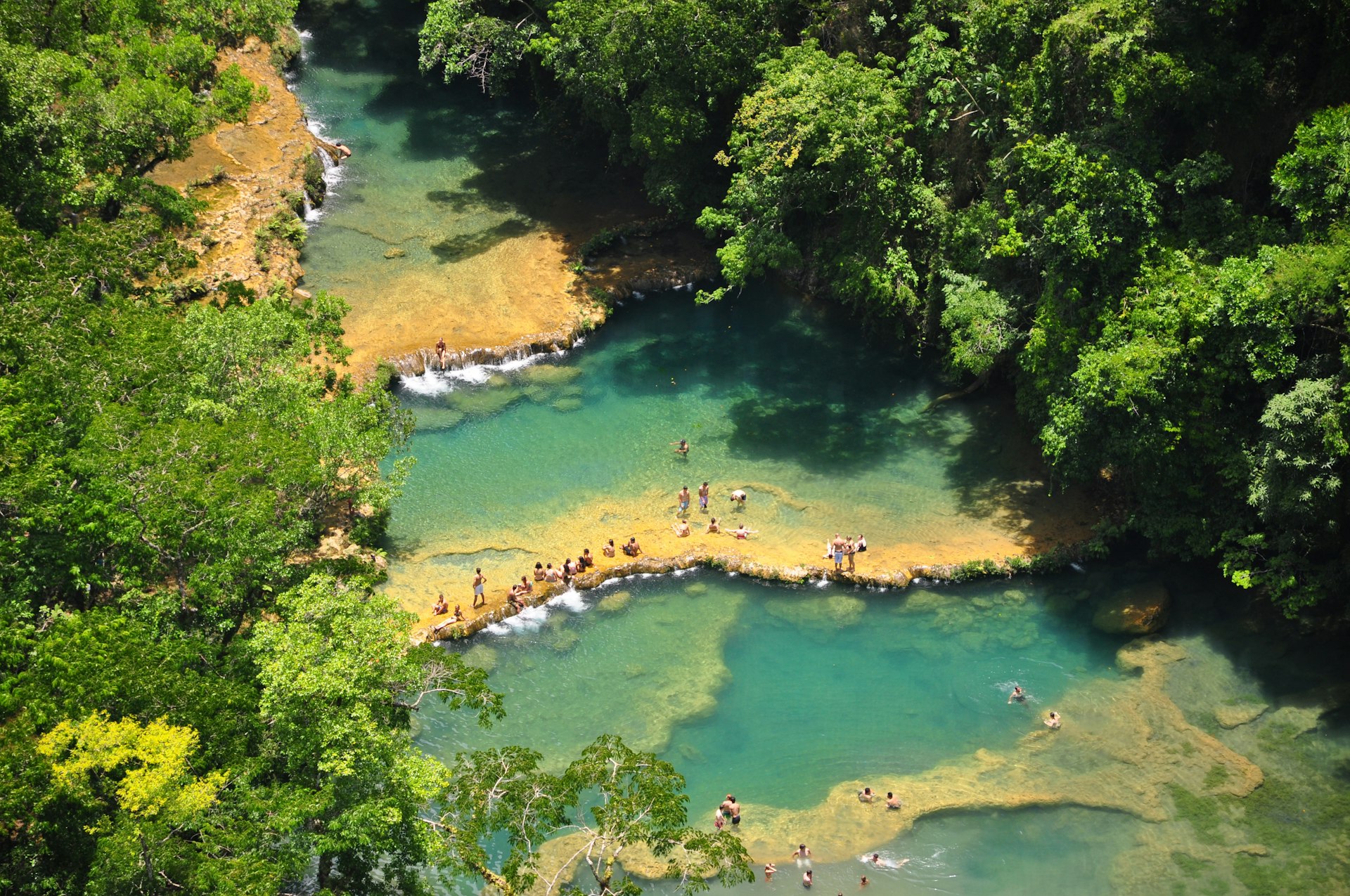
June to August is the best time for outdoor pursuits and Spanish lessons
The second high season coincides with summer vacations in the United States, Canada and Europe. It’s not quite as busy as during the first high season, but there'll be no shortage of crowds.
June is still decidedly wet, but it's usually hot and sunny in the morning, with the rain arriving in the late afternoon or evening. The turtle nesting season starts on the Pacific Coast, making June one of the best times to find a volunteer placement on a conservation project, and local fiestas take place around Lake Atitlán.
For a few weeks in July and August – the exact period varies from year to year – there is a short dry period known as the canícula. It gets very hot, and there is no relief in the form of afternoon showers. However, because the skies are clear, it’s a great time to hike to lookouts and volcano summits, visit Mayan ruins in the Petén jungle, and float down the river at Semuc Champey.
The town of Cobán hosts the National Folklore Festival of Rabin Ajaw in July and celebrates the history, culture and influence of Maya women, past and present.
Many students take advantage of this second high season to study Spanish at one of Guatemala’s many language schools during summer break. Having lots of other students studying at the same time means there's more opportunity to learn from each other, and you won't feel like the only foreigner in town.
The summer months are also the best time to enjoy the bounty of fruits that grow in this tropical environment, with many crops becoming ready to harvest from June.
Strawberries, mangoes, papayas and bananas are everywhere, and June and July are also the peak season to enjoy pitaya (dragonfruit), whose vivid magenta flesh makes for a killer smoothie.
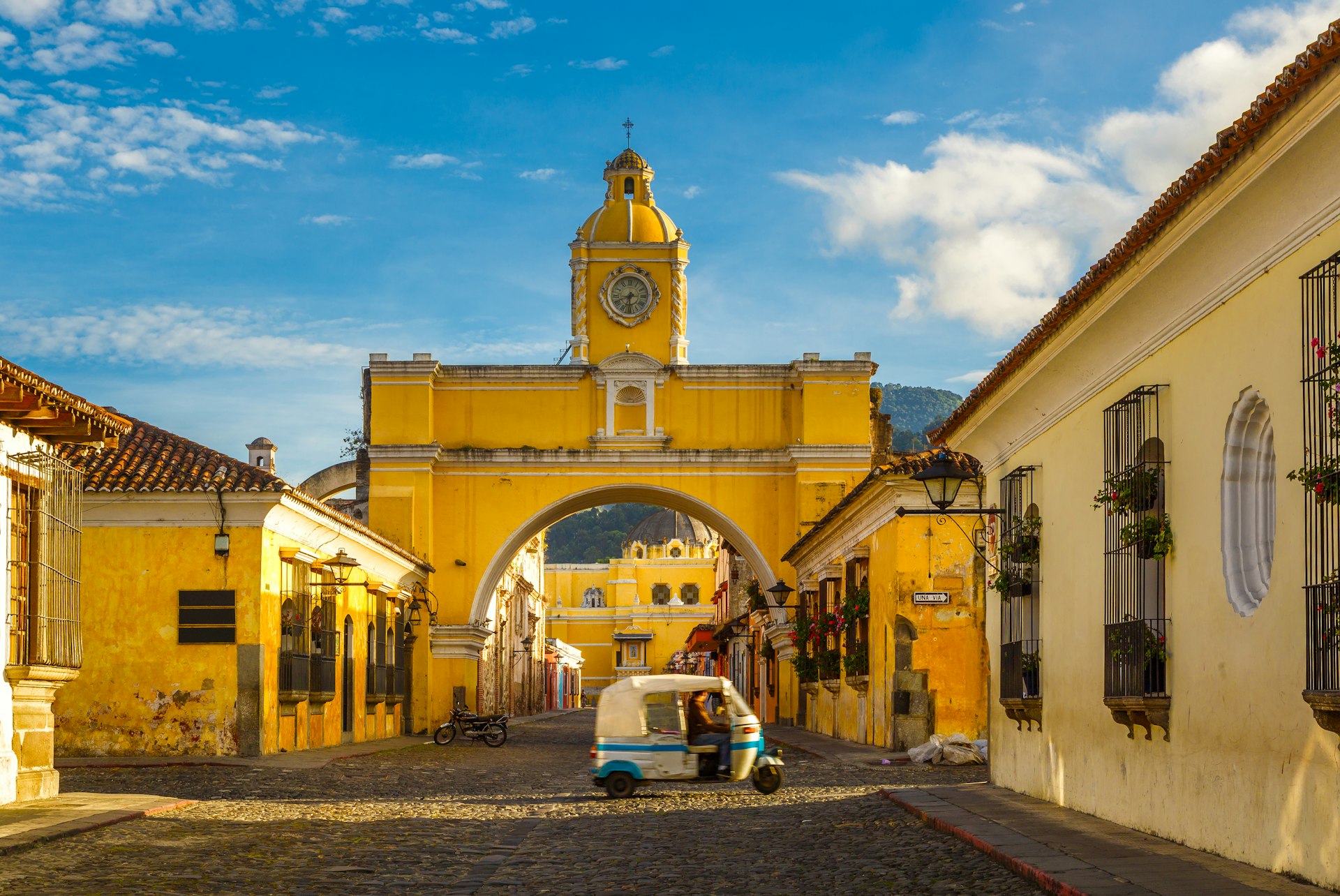
April to May and September to October is the best time for slow travel
The two low seasons in Guatemala fall at either end of the rainy season – from just after Holy Week to the end of May, and from September to the end of October. The crowds vanish, and you might even have the whole hostel dorm to yourself.
The weather is variable. You might have sunny days with afternoon or evening showers, or you can have days of non-stop drizzle, especially in May and September. Rain gear, quick-drying clothes and a waterproof cover for your backpack are essential pieces of kit.
You’ll also need bug repellent because the rain brings mosquitoes and the risk of mosquito-borne diseases such as malaria, dengue fever, chikungunya and zika.
Accommodations tend to be cheaper, and it’s easier to find places to stay during the low season. You may even find a cost-effective house-sitting gig as snowbirds fly north for summer. The rain makes the landscape vibrantly green and brings out lots of flowers, but it also produces huge amounts of mud, which can put a dampener on outdoor activities.
If you’re planning on hiking or climbing volcanoes, bring waterproof hiking shoes with good tread to get you across the slippery terrain. Good tread is also important for your everyday shoes: those cobbled streets in Antigua can become lethally slippery. Sturdy, waterproof sandals that dry quickly are best; flip-flops can easily get swept away as you’re trying to ford a street that has turned into a river.
The rainy season weather can really slow down transport, so this is not the time for a whirlwind trip or a tight schedule. Roads get washed away or blocked by rockfalls, public transport becomes less reliable, and journeys that normally take a couple of hours suddenly take the better part of a day.
Power outages are more common due to heavy downpouts, as well as internet drop-outs. You may find yourself stuck in one place for longer than planned, but if you don’t have a fixed itinerary, just relax and enjoy the break.
The rain starts to ease come October, and showers tend to be confined to the afternoons. Enjoy outdoor pursuits in the morning while it’s sunny, relax under shelter while the rain comes down, then hit the nightspots afterward, when everything smells fresh and clean.

